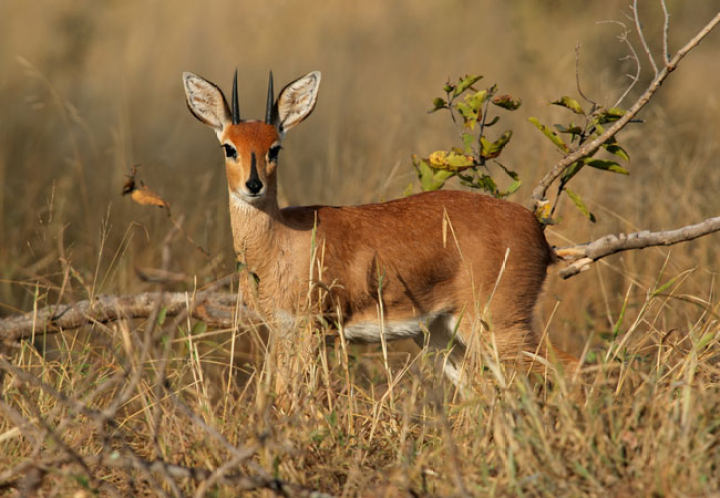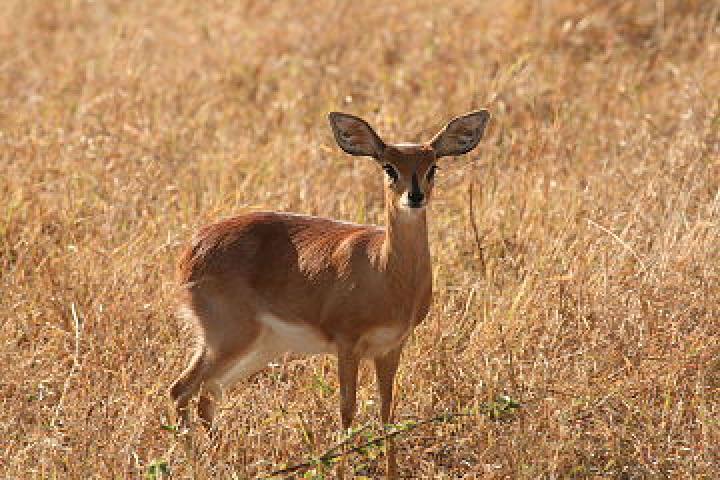
The steenbok is a small herbivore with a body length of 65-100 cm, a shoulder height of 45-60 cm and a weight of 7-16 kg. The ears are large and have patterns similar to finger marks. Males have a pair of smooth upright parallel black horns. The steenbok lives in a variety of semi-desert habitats, and can be found in open woodlands to scrubland.

Due to size constraints, they cannot eat plants higher than 0.9 meters, but are good at grabbing the roots and stems of plants, which also makes them hardly drink water directly, but obtain water from food. They are active day and night, resting in the shade only when the day is too hot, and are usually busy grooming, ruminating, or sleeping briefly.

There are many animals that prey on steenbok pups. They are hunted by all wild cats, wild dogs, jackals and karakul, even by boa constrictors and eagles. Steenbok has good eyesight and good hearing, and is good at spotting danger. Their defense mechanism is to stand still and hide for as long as possible. If this tactic is unsuccessful, they flee, in a zig-zag fashion, to avoid being chased by predators.

During rushing to a safe place, they usually stop periodically, look back, and try to hide again by standing still. They were seen fleeing and hiding in abandoned caves. Generally speaking, Steenboks are herbivores, feeding on lower vegetation such as young leaves, flowers and twigs of various plants. They have the ability to survive long periods of time without water, getting all the moisture they need from their food. When necessary, especially during the dry months, they use their sharp hooves to scoop up bulbs and tubers for moisture.







